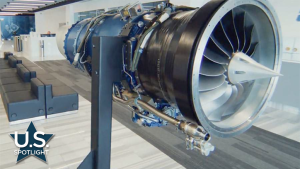A new survey finds budget and schedule overruns are the norm for construction projects, with the results serving as an important “wake-up call” for owners in North America.
“The biggest purpose of this study was to provide insights for construction project owners into what it’s going to take to really be successful at making sure your projects are delivered at a high quality with the teams that you have in place; saying ‘here are the tools you need, here are the resources you need to be a best in class project owner delivering projects on time and on budget and within scope,’ ” Zachary Reiss-Davis, senior manager of product marketing with Procore, told the Daily Commercial News.
Survey says…
The survey, commissioned by Procore Technologies, Inc., a construction management software provider, and conducted in May and June by international research firm IDC, revealed 75 per cent of owners were over planned budgets on their projects, 77 per cent were late, and, on average, projects were 70 days late compared to their original estimates.
Owners experienced an average of six changes to the budget and five changes to the schedule per project, with a 15 per cent average increase in project costs as a result.
Participants consisted of 303 U.S. and 202 Canadian construction project owners and developers in the public and private sectors including private corporations, governments, health care and education institutions and commercial real estate owners and operators.
Questions focused on the challenges owners face and how they are addressing them and the benefits of moving from manual processes to technology solutions, explained Warren Shiau, research vice-president with IDC.
“The questions were really aimed at finding out what sort of underlying processes and technology there is behind how owners manage their projects: how they manage them in terms of project management, how they manage them in terms of financial controls and how they manage them in terms of governance,” he noted.
Digitization is key to efficiency
The survey also looked at the formalization and digitization of processes and workflows.
“You still have a quarter of all respondents saying, ‘I don’t have my drawings digitized’ but you also are seeing that a quarter of respondents didn’t have change orders digitized,” said Reiss-Davis. “We want to really help the industry move to a world where we can be more efficient about that in order to get the best outcomes.”
Eighty-five per cent of respondents are not using specialized construction-specific software.
“We also looked at adoption of integrated software versus what is still very common, which is the use of isolated productivity-type software or isolated non-integrated software applications,” Shiau said.
The survey found strong performers, owners who leverage digital solutions, are generally delivering projects on budget and on schedule. Whereas low performers, or owners reliant on manual or siloed productivity solutions, are typically delivering projects late and over budget. They are struggling with outdated processes from project conceptualization, preconstruction planning, change order management and incident tracking on the jobsite, a release indicates.
“We really wanted to take a look at strong performers and less strong performers when you think about whether something is being delivered over budget, being delivered late or having cost overruns,” said Reiss-Davis. “We said, what is causing that? What are the big challenges people are having?”
Owners outline challenges faced
According to owners, the greatest challenge to getting projects done is onsite labour shortages (69 per cent), with only 24 per cent of respondents indicating they are well-staffed, with the right skill sets around financial governance, reporting and controls. Only 33 per cent said they are well-staffed for planning design and scoping. Owners also saw environmental regulations (66 per cent) and project cost escalations (61 per cent) as challenges to their businesses.
Owners predict the greatest impact on project performance in the next three years will be BIM (53 per cent), connected supply chain (44 per cent), prefabrication of components (41 per cent), and predictive analytics for cost modelling (34 per cent).
“You also see owners in this report really talking about the new technologies they are planning to adopt in the future which I believe will have a huge impact, especially modular construction and prefabrication. (Those as well as) more collaboration are all things that are bubbling to the top of people’s minds because they are areas that increase materials cost and increase labour shortages,” Reiss-Davis said.
The survey outlined the top technologies identified as a priority for future adoption including data centralization technologies (42 per cent); predictive analytics for cost modelling (36 per cent); BIM (32 per cent); digital twin (31 per cent); and green building/construction (30 per cent).
Follow the author on Twitter @DCN_Angela.











Nobody tell Cardus.
I find it interesting that the “findings” of the survey, a survey commissioned by a software developer, are that projects are late and over-budget because technology is not being utilized. What about concepts such as – insufficient time put into planning and understanding what was desired and thereby eliminating the need for changes after the fact and the discovery that the market pricing is in fact different? It is very easy to take a program and say it WILL take 3 days and then complain when it ACTUALLY takes 5 days to complete because that is the amount of time it takes to be thoughtful and thorough.
Technology is an awesome tool and yes does make flow of paper and ideas easier and more efficient, but as it is usually just used to speed of the transmission of “half-baked” ideas in order to achieve an arbitrary date on a schedule, I feel purporting it as the solution to over-budget and late projects is a bit of a simplification.
Send. More. Information